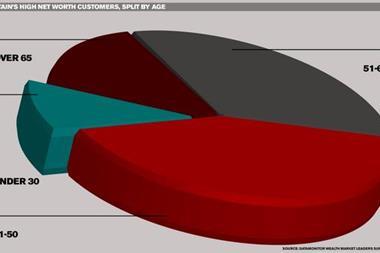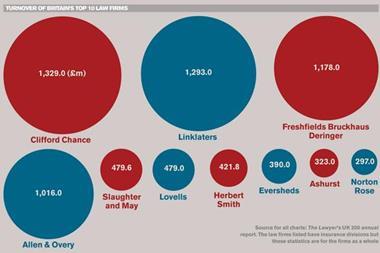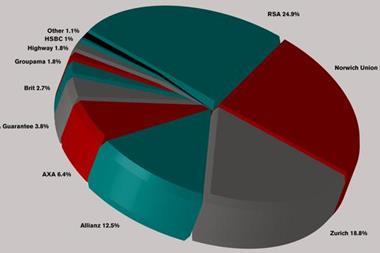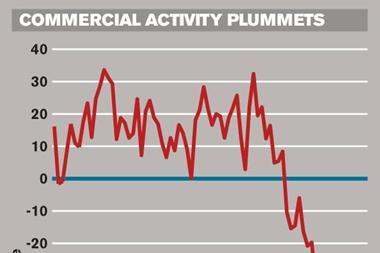Peter Lee reports on the issues
Overview
Motor premiums may be rising, but insurers still have challenges to overcome before the market becomes sustainable.
What kind of market is UK motor insurance right now? Is it a haven of stability in an otherwise treacherous financial services environment or is it as cut-throat as ever?
The answer is a bit of both. People always need motor cover and UK insurance is probably the most sophisticated and technically capable in the world. Rates have been steadily increasing at about 1.5% a month since last autumn and the evidence points to a continuing hard market.
Those with the know-how and market profile to take full advantage are making a profit and looking forward to better times, while the weaker players have a lot of ground to make up.
Despite the recent advances, motor insurance remains a challenging way to make money. The market has only stayed in profit in recent times with repeated reserve releases (£1.3bn in 2007), with no improvement in reported underlying profitability so far. It is a question of “when” not “if” the reserve surplus runs out, forcing the industry to tackle underlying profitability.
The market loss ratio improved slightly last year to 84%, from 86% in 2007. It’s doubtful that there will be any further improvement this year, but the underlying market loss ratio is likely to remain above 80%. With expense ratios likely to be slightly below 30%, the average combined ratio will still be over 100%.
And, since we no longer talk about investment income these days, any profits will have to come yet again from the reserves. This cannot go on forever.
Rate increases not what they seem
What is stopping pricing action translating into bigger improvements in performance? There are three main explanations: increased consumer price transparency, the new distribution environment and evidence that claims are moving up again.
Consumers can now easily compare prices across previously separate distribution channels. Recent EMB research shows that price comparison sites are becoming more popular, especially among younger motorists.
Increased price transparency means insurers will need to be competitive across a wider spectrum of providers to achieve similar volumes of business. Brokers looking at maximising their income are also confusing insurers’ competitive positioning.
The internet has been blamed for a lot of the insurance industry’s difficulties, often unfairly. Yet there is no doubt that the web makes it more difficult for insurers to get the increases they require, to such an extent that leading underwriters are reviewing how they price and underwrite policies purchased this way.
As a buyer, it is much easier to change your details and reduce the price if you’re using the internet compared with, say, using an intermediary or phone service. Someone who finds their policy has become more expensive may be tempted to shave a couple of thousand miles of motoring off their proposal. The line between accuracy and fraud gets crossed.
Insurers are becoming increasingly aware of the cost of underwriting fraud and finding ways to tackle it. As a result, underwriting gains are almost immediately eroded.
Rising claims
To read some press reports, you might think the recession has triggered a tsunami of questionable claims. In reality, motor is less susceptible to low-level claim exaggeration than household. EMB figures show no significant increase in fraud in either class – yet.
Still, there are signs of trouble. Fraud in the wider financial sector
is increasing, with the UK fraud prevention service, CIFAS, reporting a 16% increase. Also, personal injury claims for some of our clients have risen over the past few months.
This has been particularly noticeable for the broker channel.
Fraud is often accommodated when claimants “stretch the truth”, while systematic fraud attracts
the serious enforcement efforts. Insurers adopting a zero-tolerance approach can improve profits. At the same time, small legitimate claims that policyholders would not have bothered with in more prosperous times need to be settled promptly.
Other legitimate pressures on claims continue to mount. Last year we estimated accident management companies were adding 1.5% to loss ratios – a figure that excludes the additional (but hard to measure) costs of referrals by them to personal injury lawyers. It is likely this factor has continued to rise in importance.
Periodic payments: end of the phoney war
In 2003, there was a heated debate about the likely impact of a change in the law that would make it easier for courts to use periodic payments in personal injury cases.
This device enables victims to be compensated gradually over their lifetimes rather than receiving a lump sum.
The insurance industry feared periodic payments, if implemented, would harm them in all sorts of ways. They would increase administration costs, complicate reinsurance arrangements (especially in relation to indexation clauses) and leave the liability on the balance sheet. In any event, the market for annuities was grossly under-developed and costly to use.
There then followed a “phoney war” during which periodic payments were much discussed, but little actually happened.
There is now evidence, admittedly anecdotal, that this phase is coming to an end. Low interest rates have made periodic payments more attractive to claimants.
Several insurers have reported a significant rise in the number of these settlements and, if this becomes a confirmed trend, the cost implications could be substantial.
Meeting the challenge
The recession has affected the UK motor insurance sector much less than most other parts of the economy. By today’s standards, it is a relatively stable environment and, although mergers and acquisitions are always bubbling under the surface, all the key players should stay the course.
But the basic challenge persists as the sector heads for its own credit crunch in the form of reserves that will eventually become so depleted that they can no longer compensate for unsustainable loss ratios. When this moment will arrive is a matter for conjecture, but it could be little more than a year or two away. Companies will then have to underwrite profitably.
Those that succeed will have got their key disciplines working together effectively in a rapidly moving environment. Accurate (and granular) pricing and tight underwriting, timely management information, managing distribution, a trusted but cost-effective claims service, effective marketing, low expense ratios, and proactive fraud prevention and detection measures will be among the hallmarks of a successful insurance company.
Nothing new in that, of course, but the rewards for getting it right, and the difference between success and failure, are going to become greater than ever. A widely held misconception is that over the cycle the market makes an acceptable return; the stark truth is that only the best in the market make money.
Postscript
Peter Lee is a partner at EMB, an actuarial and business consultant






































No comments yet